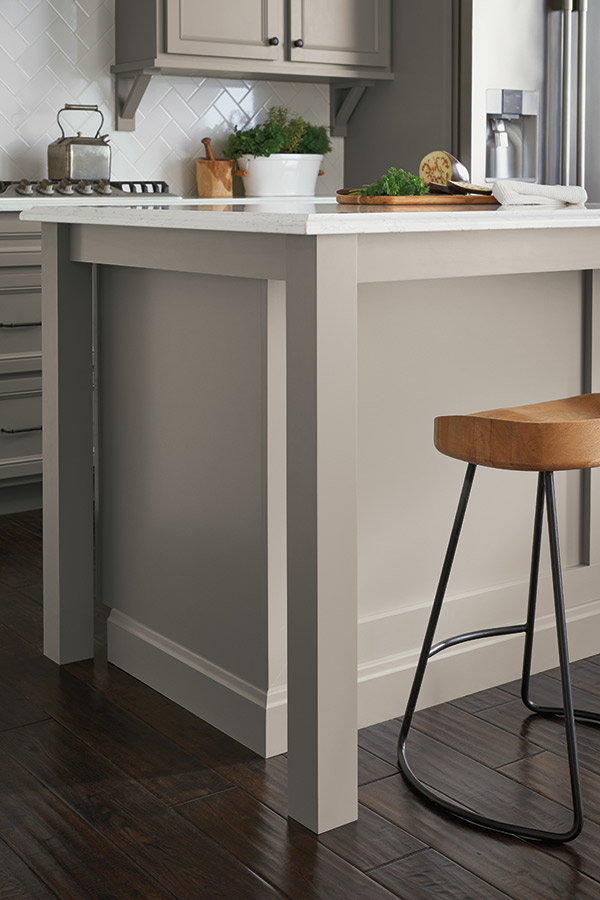An Overview to Choosing the Perfect Legs For Kitchen Area Island for Your Home
Picking the ideal legs for your cooking area island is a nuanced choice that impacts both the performance and visual allure of this central space. Elements such as elevation, products, and design play a vital duty in harmonizing your island with the total kitchen area layout. In addition, understanding the importance of stability and maintenance can dramatically affect your choice. As you think about these aspects, it comes to be apparent that the appropriate legs can transform not just the look of your kitchen however likewise its functionality for several years to find. What certain functions should you focus on in this selection process?

Comprehending Kitchen Area Island Legs
When choosing legs for a kitchen area island, it's necessary to recognize their functional and aesthetic functions in the overall layout. The legs work as an essential support system, making sure security and resilience for the island, which commonly functions as a work area, dining location, or gathering place. Therefore, the selection of material and construction technique need to be robust enough to hold up against daily use and prospective wear.
Along with their architectural obligations, legs contribute dramatically to the island's visual allure. They can improve the cooking area's design, whether through traditional, modern, or eclectic styles. The elevation and proportion of the legs are also critical considerations; they have to harmonize with the island's counter top elevation while guaranteeing comfy seating for those using the area.
Moreover, the leg design can affect the general circulation of the kitchen. Open, airy leg designs can create a feeling of lightness, while solid, significant legs may share a more based and secure visual - Legs For Kitchen Island. Comprehending these useful and visual facets will certainly direct property owners in making informed choices that complement their kitchen's layout and boost its usability
Popular Styles and Products
The choice of legs for a kitchen island incorporates a selection of preferred styles and materials, each offering one-of-a-kind features that can improve both functionality and aesthetic appeals. Amongst one of the most sought-after styles are modern, rustic, and conventional. Contemporary legs commonly include smooth, minimalist designs that highlight simplicity and clean lines, making them optimal for modern cooking areas. Rustic styles, on the other hand, welcome natural environments and commonly display redeemed timber or distressed surfaces, including warmth and appeal to the room. Traditional legs normally show ornate information and craftsmanship, enhancing classic cooking area styles.

Elevation and Stability Factors To Consider

Security is an additional crucial consideration. The legs of the kitchen area island must supply appropriate support, ensuring that the framework can withstand day-to-day use without wobbling or changing. Product selection plays a significant role in stability; steel legs, for example, often tend to provide higher strength contrasted to wood. In addition, making sure that the island is safely anchored to the flooring or wall surface can improve stability, specifically for larger islands that might bear substantial weight.
Matching Your Kitchen Visual
Choosing the find out this here appropriate legs for your cooking area island exceeds functionality; it additionally plays a significant function in the general visual of the space. When selecting legs, take into consideration the design style of your kitchen. For a contemporary appearance, streamlined metal or minimal designs can create a clean, contemporary ambiance. On the other hand, typical or rustic kitchens often profit from wood legs with intricate detailing or a distressed surface, boosting warmth and character.
Legs that match or contrast with your island's surface area and bordering cabinets can develop visual harmony or striking focal click to read more points. Furthermore, consider the finish of the legs; matte, glossy, or textured coatings can dramatically impact the overall feeling of the kitchen area.
Setup and Upkeep Tips
Installing cooking area island legs requires mindful interest to detail to make sure both security and aesthetic allure. Utilize a stud finder to situate wall studs if you are affixing the legs to a wall or making use of brackets for included assistance.
When securing the legs, make use of high-grade screws and, if required, timber adhesive for additional toughness. For metal legs, ensure that you are making use of appropriate anchors and tools to protect against damage to your flooring. It is suggested to look for levelness after setup, making changes as needed to prevent tottering.
Tidy the legs with an ideal cleaner, preventing rough products that might damage the surface area. By complying with these setup and upkeep tips, you can ensure that your cooking area island legs continue to be both aesthetically attractive and functional.
Conclusion
In conclusion, picking the suitable legs for a cooking the original source area island requires cautious factor to consider of height, security, and aesthetic compatibility. Ultimately, thoughtful leg option plays an important duty in raising both the usefulness and style of the kitchen area.
When selecting legs for a kitchen area island, it's essential to recognize their practical and visual roles in the overall layout. Open, airy leg styles can develop a sense of agility, while solid, considerable legs might communicate a much more based and secure aesthetic. The legs of the kitchen area island ought to give sufficient assistance, ensuring that the structure can withstand everyday usage without changing or tottering.Mounting kitchen island legs requires cautious focus to detail to make sure both security and visual allure.In conclusion, selecting the proper legs for a kitchen island necessitates careful factor to consider of elevation, security, and visual compatibility.
Comments on “Discover Affordable and Chic Solutions in Legs For Kitchen Island Updates”